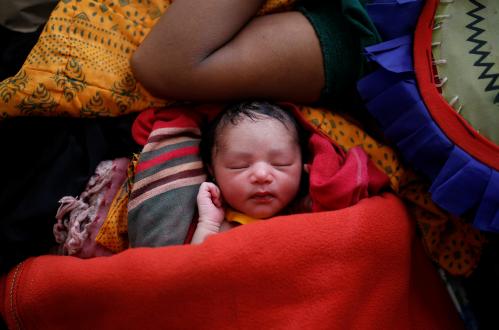As 2016 comes to a close, after a year that was often turbulent, and at the eve of another year characterized by much uncertainty, I want to end with a personal blog about life and our eventual departure from it. It’s not as dark as you think…
Two years ago I gave a TED talk titled How long will I live? When Moises Naim subsequently interviewed me, he asked, “Why are you obsessed with death?” I gave a simple answer, “If you experience the loss of a loved one, which everyone does sooner or later, then you treasure life even more; you realize that, though we live much longer than ever before, life still remains way too short.” And indeed, since I experienced loss I have been passionate about understanding not only how best to deal with death, including when I should realistically expect it to come, but also what we can do to delay it as much as possible. Let me give you a couple of examples.
I find it helpful, when thinking about my own mortality, to look at my “birthday buddies.” I call “birthday buddies,” the people we share an exact birthdate with. We’re buddies because, in a sense, we share many intimate life events: We were born on the same day, we celebrate birthdays, including the big milestones at the same time; chances are that we will also have graduated, married, or retired around the same times. Depending on your age, the number of your birthday buddies is typically between 250,000 and 370,000. This is also the approximate number of children born today, most of which will draw their first breath in India (69,000), China (49,000) and Nigeria (19,000). If you want to find out the exact number of your birthday buddies, worldwide or by country, you can do so here.
Let me talk to you about mine, and how thinking of them helps me put my own life in perspective.
When I was born on January 20, 1971, I had 299,000 birthday buddies, of which 258,000 (3,200 in Germany) are still alive today, including me. What about the 41,000 who passed away since I was born? Most of them died during early childhood, initially more than 300 a month (or 10 a day). By the time I turned 10, in the early 1980s, the mortality of my “birthday buddies” had declined to around 30 a month (or one a day). Since then, the number has been rising again and is now at 85 deaths per month. This trend will continue, even accelerate, in the coming decades, reaching again 300 deaths per month, when I am in my late 60s and eventually reaching a peak of 670 (32 a day) when I am in my mid-80s. Then the number will decline again as only a smaller share of all my buddies will still be alive (Figure 1).
Figure 1: At age 45, 85 birthday buddies die each month
 Note: Monthly mortality projections for people born in 1971
Note: Monthly mortality projections for people born in 1971
Source: population.io data model developed by Katharina Fenz, Economic University of Vienna
Of the 85 of my birthday buddies who die, on average, each month, 54 are male and 31 female. Most of them are from Asia (53) and Africa (18). Interestingly, Latin America (seven) is relatively close to Europe, which claims six fatalities each month, while there is only one in North America (Figure 2). Europe’s poor performance is mostly explained by Russia (2.5), Ukraine (0.9) and Poland (0.4), which together account for almost four of the six cases.
Figure 2: 71 of my 85 birthday buddies die in Asia and Africa, six are from Europe
 Source: population.io data model developed by Katharina Fenz, Economic University of Vienna
Source: population.io data model developed by Katharina Fenz, Economic University of Vienna
I’m obviously curious to know what they die of, since that knowledge can help me to postpone my own departure. Clearly, moving to a poorer country increases your health risks, especially if you can’t access good health care. But that’s not the whole story. Russia is a relatively rich country, but Russian men have much poorer prospects than residents of many poorer countries.
Perhaps there are specific habits or conditions I should look out for. If I was a smoker, what impact would it have on my life expectancy? What about HIV, tuberculosis, or diabetes? What can I do to live a longer and healthier life?
These are some of the big questions I want to examine with you in future blogs, using the insights of a new model that the population.io team has been developing. Though it still feels like Sisyphean work, the model seeks to look systematically at the causes of death worldwide in a way that anyone can relate to. For instance, it should help me to “predict” how many years I’d lose if I began smoking or contracted tuberculosis. The larger goal is to make big data a tool for better health and lifestyles, not just increased surveillance or marketing. In fact, this could be my New Year’s resolution: to understand how all of us can have many more occasions to make wishes with our loved ones.
The Brookings Institution is committed to quality, independence, and impact.
We are supported by a diverse array of funders. In line with our values and policies, each Brookings publication represents the sole views of its author(s).








Commentary
Birthday buddies: Personalizing demography to understand our own mortality
December 19, 2016